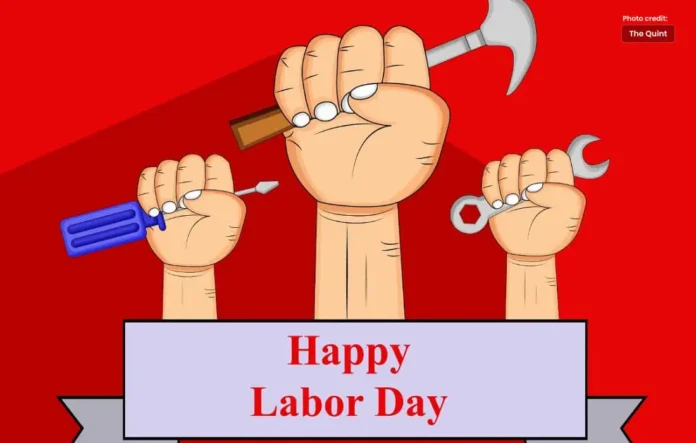Trace the journey of Labor Day from its origins to a national holiday.
Follow Labor Day history, social influence, and modern relevance as you trace it from its beginnings as a symbol of workers’ rights to its adoption as a national holiday.
Labor Day’s Development: From Protest to National Holiday
The first Monday of September is celebrated in the US with parades, cookouts, and overall laziness. On this day, a lot of Americans say goodbye to summer and take advantage of a long weekend.
But behind the celebrations, there is a deep meaning and a rich history connected to the challenges and victories of the American labor force.
Read More Informative Articles In Urdu
Labor Day had not always have the status of a federal holiday; in fact, its rise from modest origins as a workers’ protest to its current status as a national holiday is evidence of the tenacity and strength of organized labor.
The First Labor Day
According to the Central Labor Union’s plans, the first Labor Day holiday was observed on Tuesday, September 5, 1882 in New York City. Just one year later, on September 5, 1883, the Central Labors Union celebrated Labor Day for the second time.
President Grover Cleveland signed a bill on June 28, 1894, designating the first Monday in September as a national holiday. By that time, the holiday had been observed in 23 other states.
A National Holiday
The first proposal for a holiday, which proposed that the day should be observed with a street parade to exhibit “the strength and esprit de corps of the trade and labors organizations” of the community, followed by a festival for the recreation and amusement of the workers and their families, is very similar to the celebrations that many Americans engage in on Labor Day. This became into the standard for Labor Day festivities.
Prominent men’s and women’s speeches came after, with a greater focus on the holiday’s civic and economic significance.
Later still, the Sunday before Labor Day was designated as Labors Sunday and given over to the spiritual and educational facets of the labors movement by a resolution passed at the American Federation of Labors convention in 1909.
In addition to raising the standard of life in the country and helping to produce the most that the world has ever seen, American labor has also advanced our fundamental principles of political and economic democracy.
Thus, it is fitting that on Labor Day, the country honors the American worker, who is responsible for much of the country’s power, independence, and leadership.
The History of Labor Day
We must first examine Labor Day’s historical roots in order to comprehend its significance. The United States saw a fast industrialization phase in the late 19th century that was marked by hazardous working conditions, long hours, and low pay.
Millions of laborers labored in hazardous conditions with few options for resolving complaints as cities grew and industries produced more goods. This was the setting for the emergence of the labors movement.
A significant occasion that preceded Labor Day was the Pullman Strike of 1894. Workers at the upscale rail car manufacturer Pullman Palace Car Company went on strike in opposition to unfair labors practices and pay reductions.
The strike swiftly expanded across the nation, impeding rail traffic and bringing attention to the predicament of workers everywhere.
President Grover Cleveland responded by making Labor Day a federal holiday in an effort to calm the labors movement and stem the rising turmoil.
Acknowledgment and Joy
The Central Labors Union arranged the inaugural Labor Day parade, which took place in New York City on September 5, 1882. Tens of thousands of laborers demonstrated in the streets, calling for increased wages, less hours worked, and safer working conditions.
A lot of people saw the incident, and it sparked similar protests in other American cities. In the years that followed, Labor Day was observed every year, and employees used the day to express their grievances and push for reform.
The demand for Labor Day’s official recognition grew along with the labors movement. In 1894, an act was passed by Congress to recognize the accomplishments of American workers by making the first Monday in September a legal holiday.
Labor Day became a national holiday when President Cleveland signed the bill into law, giving workers a much-needed day off for relaxation and introspection.
In the Modern Era, Labor Day
Labor Day, which officially signals the unofficial end of summer and the start of fall, has changed over time from being a day of protest to a celebration day.
It’s a time for many Americans to unwind with loved ones, partake in outdoor activities, and savor the remaining warm days of the year.
But in the middle of the parades and picnics, it’s important to remember the origins of the holiday and the continuous difficulties that workers face globally.
The labors movement has encountered additional difficulties in recent decades, including as automation, globalization, and the growth of the gig economy.
The number of union members has decreased, traditional industries have suffered, and economic inequality has reached previously unheard-of heights.
Despite these challenges, workers are still fighting for fair pay, respectable benefits, and respectable working conditions, which is keeping the spirit of solidarity and collective action alive.
Conclusion
Labor Day serves as a reflection of the accomplishments and sacrifices made by the American workforce, not merely as a day off. From its grassroots beginnings to its official designation as a national holiday, Labor Day personifies the tenacity and camaraderie that characterize the labors movement.
As we commemorate this day, let us keep in mind the hardships faced by those who came before us and renew our commitment to the continuous struggle for equality and fairness in the workplace.
Also read this: Holiday Announced on May 1 to Mark Labor Day




